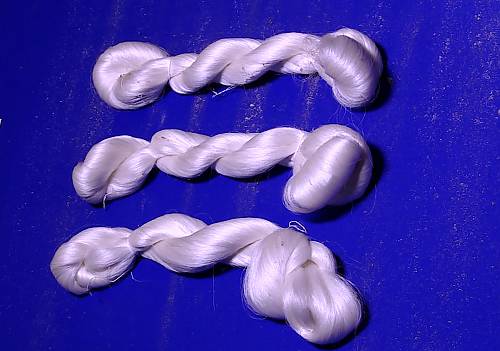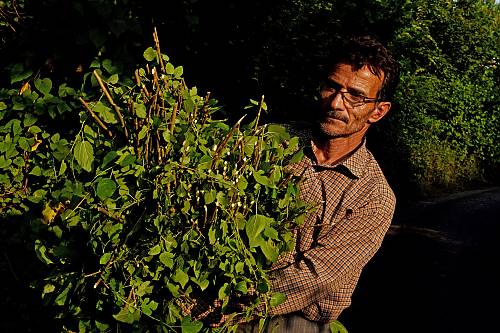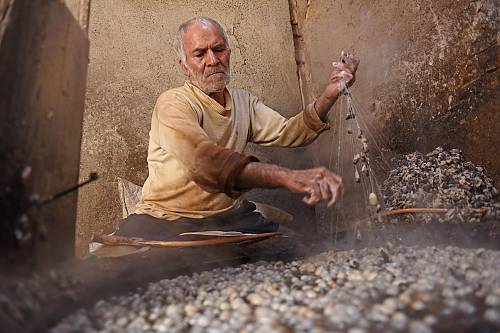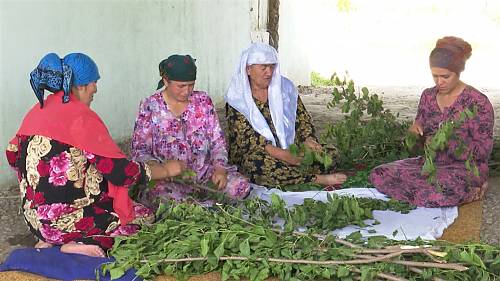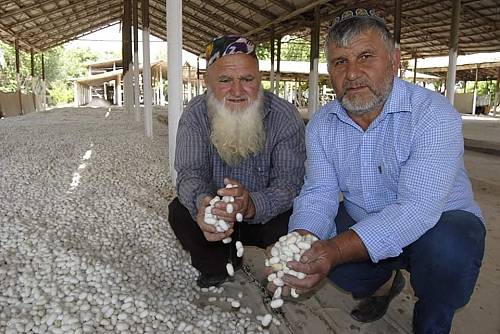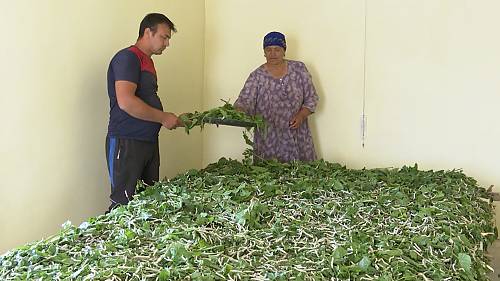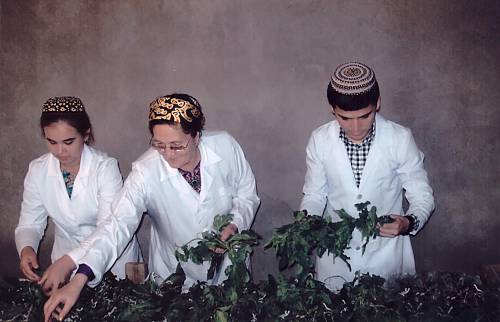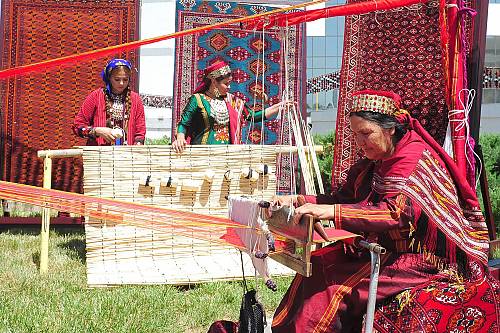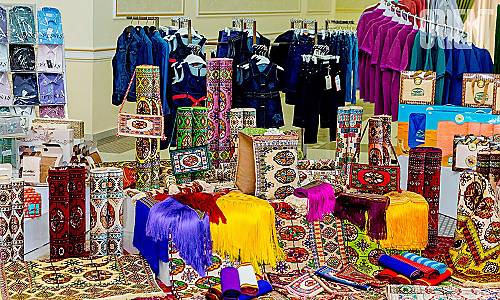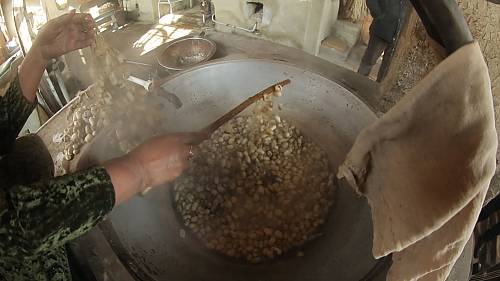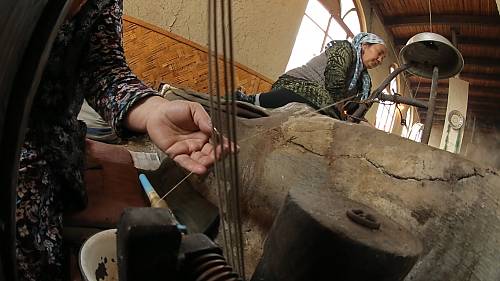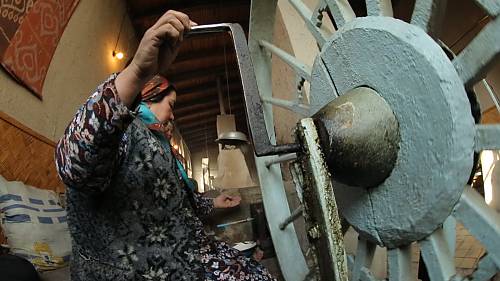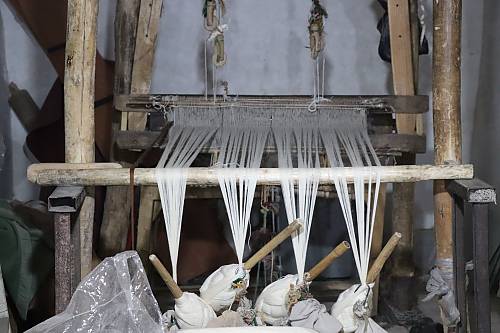Sericulture and traditional production of silk for weaving
Afghanistan, Azerbaijan, Iran (Islamic Republic of), Türkiye, Tajikistan, Turkmenistan and Uzbekistan
Inscribed in 2022 (17.COM) on the Representative List of the Intangible Cultural Heritage of Humanity
In sericulture and the traditional production of silk for weaving, farmers care for the silkworms through their entire lifecycle, growing the mulberry trees that provide leaves upon which the worms feed and produce silkworm eggs. The fibres are reeled from the cocoons, spun into silk threads, cleaned and dyed. The threads are then used to create various types of craft products, including fabrics, carpets, rugs and curtains. Silk products are highly valued by all social and cultural classes, and people use them for special occasions such as weddings, funerals and family gatherings. Deeply rooted in the traditions of the Great Silk Road, the practice is an expression of cultural identity and centuries-old traditions. It is also viewed as a symbol of social cohesion, as the silk trade contributed to the exchange of culture and science within and across the countries concerned.

